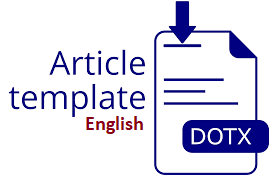Pengolahan Citra dengan Metode Ekstraks Deteksi Mata Manusia Berbasis I Fitur
DOI:
https://doi.org/10.47065/bulletincsr.v1i1.82Keywords:
Eyes; Image; Feature ExtractionAbstract
The eye functions to see and interpret the shapes, colors, and dimensions of objects in the world by processing the light reflected by objects that give off light. Visual disturbances or eye diseases often occur in people so that they interfere with their daily activities. Moving or staying still can provide information about the human condition. From the information obtained from eye detection, it can be concluded that an eye movement. Measuring eye movement is psychophysical work and to obtain information about a person's level of unconscious behavior, strategies to process eye movement information require fixation and knowledge of the direction of the gaze. Feature extraction is a feature / feature retrieval from a form where the value obtained will be analyzed for further processing. Feature extraction is done by counting the number of dots or pixels found in each check. The features obtained from an image are the distinguishing characteristics of other images.
Downloads
References
. Sari YA, Dewi RK, Fatichah C. Seleksi Fitur Menggunakan Ekstraksi Fitur Bentuk, Warna, Dan Tekstur Dalam Sistem Temu Kembali Citra Daun. JUTI J Ilm Teknol Inf [Internet]. 2014;12(1):1. Available from: http://juti.if.its.ac.id/index.php/juti/article/view/39
. Fifin DR. Pengenalan pola citra leukosit dengan metode ekstraksi fitur citra. Pengenalan Pola Citra Leukosit Dengan Metod Ekstraksi Fitur Citra. 2010;6:133–7.
. Nurcahya ED, Purnama IKE, Purnomo MH. Ekstraksi fitur secara otomatis untuk pengenalan pola gerakan mata. 2012;2012(semnasIF):25–31.
Bila bermanfaat silahkan share artikel ini
Berikan Komentar Anda terhadap artikel Pengolahan Citra dengan Metode Ekstraks Deteksi Mata Manusia Berbasis I Fitur
ARTICLE HISTORY
How to Cite
Issue
Section
Copyright (c) 2020 Setiawan Syah Zebua

This work is licensed under a Creative Commons Attribution 4.0 International License.
Authors who publish with this journal agree to the following terms:
- Authors retain copyright and grant the journal right of first publication with the work simultaneously licensed under Creative Commons Attribution 4.0 International License that allows others to share the work with an acknowledgment of the work's authorship and initial publication in this journal.
- Authors are able to enter into separate, additional contractual arrangements for the non-exclusive distribution of the journal's published version of the work (e.g., post it to an institutional repository or publish it in a book), with an acknowledgment of its initial publication in this journal.
- Authors are permitted and encouraged to post their work online (e.g., in institutional repositories or on their website) prior to and during the submission process, as it can lead to productive exchanges, as well as earlier and greater citation of published work (Refer to The Effect of Open Access).














